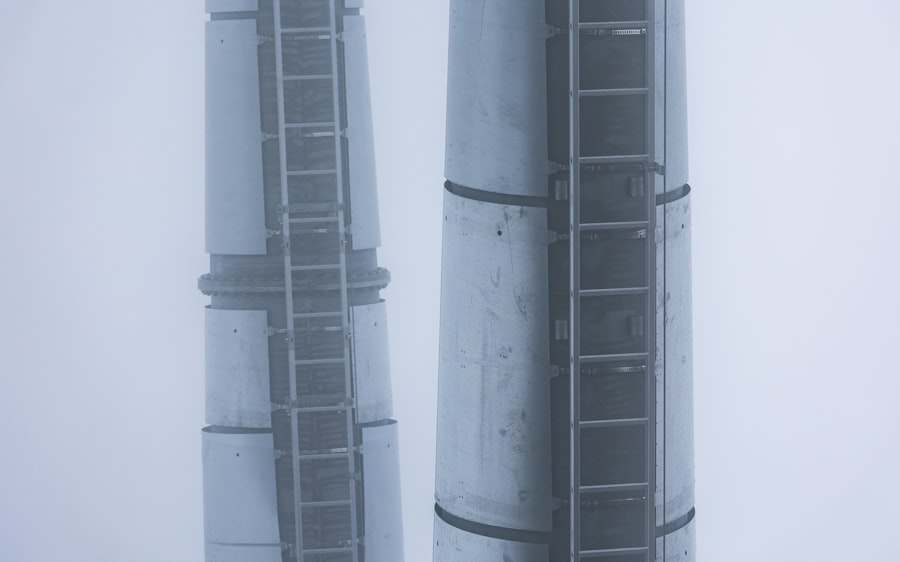The prospect of establishing a permanent human presence on the Moon has captivated scientists, engineers, and space enthusiasts for decades. As nations and private entities ramp up their efforts to explore the lunar surface, the construction of a lunar base has emerged as a pivotal goal. This ambitious endeavor is not merely about erecting structures; it represents a significant leap in humanity’s quest for knowledge and exploration beyond Earth.
A lunar base could serve as a launchpad for deeper space exploration, a site for scientific research, and a hub for international collaboration. The construction of a lunar base involves a multitude of disciplines, including aerospace engineering, materials science, and environmental studies. The Moon’s unique environment presents both opportunities and challenges that must be addressed to ensure the success of such an undertaking.
As humanity stands on the brink of this new frontier, understanding the complexities of lunar base construction becomes essential for paving the way toward sustainable extraterrestrial habitation.
Key Takeaways
- Lunar base construction presents unique engineering challenges due to the moon’s harsh environment and lack of resources.
- Resource utilization and sustainability are crucial for long-term lunar base operations, requiring innovative solutions for water, oxygen, and food production.
- Protecting the lunar base from micrometeoroids and radiation is essential for the safety of astronauts and equipment, necessitating advanced shielding and monitoring systems.
- Communication and navigation on the moon require specialized technology and infrastructure to ensure reliable connectivity and accurate positioning for lunar base operations.
- Transportation and logistics for lunar base operations demand efficient and reliable systems for delivering supplies, equipment, and personnel to and from the moon.
Engineering Challenges of Building on the Moon
Building on the Moon is fraught with engineering challenges that require innovative solutions. One of the most significant hurdles is the Moon’s harsh environment, characterized by extreme temperatures, low gravity, and a lack of atmosphere. These conditions necessitate the development of specialized materials and construction techniques that can withstand the rigors of lunar life.
Engineers must consider how to insulate habitats against temperature fluctuations that can swing from scorching heat during the day to frigid cold at night. Moreover, the Moon’s low gravity presents unique structural challenges. Traditional construction methods used on Earth may not be applicable in this environment.
Engineers must design structures that can support human activities while ensuring stability and safety. This includes considering how to anchor buildings to the lunar regolith, which is a fine dust that can be both abrasive and unstable. The use of advanced robotics and automated construction techniques may play a crucial role in overcoming these challenges, allowing for efficient and precise building processes.
Resource Utilization and Sustainability on the Moon

Resource utilization is a cornerstone of sustainable lunar base construction. Transporting materials from Earth to the Moon is prohibitively expensive, making it imperative to leverage local resources. The Moon is rich in various materials, including regolith, which can be processed to create building materials such as concrete.
Additionally, water ice deposits found in permanently shadowed craters could provide essential resources for drinking water and oxygen production. Sustainability also extends to energy sources. Solar power is abundant on the Moon, with nearly two weeks of continuous sunlight followed by two weeks of darkness.
Developing efficient solar energy systems will be crucial for powering lunar habitats and operations.
By utilizing local resources and implementing sustainable practices, a lunar base can minimize its reliance on Earth and enhance its viability as a permanent outpost.
Protecting the Lunar Base from Micrometeoroids and Radiation
| Metric | Data |
|---|---|
| Micrometeoroid Impact Rate | 0.2 impacts/cm^2/year |
| Radiation Levels | 2.5 mSv/day |
| Protective Shielding Thickness | 10 cm |
| Shielding Material | Regolith-based composite |
One of the most pressing concerns for any lunar base is protection from micrometeoroids and cosmic radiation. The Moon lacks a protective atmosphere, exposing its surface to constant bombardment from space debris. Even small particles traveling at high velocities can cause significant damage to structures and pose risks to human safety.
Engineers must design habitats with shielding capable of absorbing impacts from micrometeoroids while ensuring that living spaces remain safe and functional. In addition to micrometeoroids, radiation poses a serious threat to human health on the Moon.
To mitigate these risks, lunar habitats may need to incorporate thick walls made from regolith or other materials that can effectively block radiation. Furthermore, strategic placement of living quarters below the surface or within natural caves could provide additional protection against these hazards.
Communication and Navigation on the Moon
Effective communication and navigation systems are essential for the success of lunar base operations. The Moon’s distance from Earth presents challenges in maintaining real-time communication, as signals can take several seconds to travel between the two bodies. Developing robust communication networks that can operate independently on the lunar surface will be crucial for coordinating activities among astronauts and robotic systems.
Navigation on the Moon also requires innovative solutions due to its unique terrain and lack of familiar landmarks. Traditional GPS systems are not applicable in this environment, necessitating the development of alternative navigation technologies. Astronauts may rely on advanced mapping systems that utilize data from orbiting satellites or landers equipped with precise positioning capabilities.
By establishing reliable communication and navigation systems, lunar base operations can function smoothly, enhancing safety and efficiency.
Transportation and Logistics for Lunar Base Operations

Transportation and logistics are critical components of any lunar base operation. The Moon’s surface presents unique challenges for mobility, with its rugged terrain and fine dust making traditional vehicles less effective. Engineers must design specialized rovers capable of traversing various landscapes while carrying supplies and equipment necessary for construction and daily activities.
Logistics also involves planning for the delivery of materials from Earth to the Moon. This requires careful coordination between launch schedules, cargo capacities, and storage capabilities on the lunar surface. Establishing a reliable supply chain will be essential for ensuring that astronauts have access to necessary resources without delays or shortages.
As technology advances, autonomous delivery systems may play a significant role in streamlining logistics, allowing for efficient transportation of goods across the lunar landscape.
Human Factors and Health Considerations on the Moon
The health and well-being of astronauts living on the Moon are paramount considerations in lunar base design. Prolonged exposure to low gravity can lead to various health issues, including muscle atrophy and bone density loss. To counteract these effects, engineers must incorporate exercise facilities into habitat designs, allowing astronauts to maintain their physical health during extended missions.
Psychological factors also play a crucial role in human factors research for lunar missions. The isolation and confinement experienced by astronauts can lead to stress and mental health challenges. Creating communal spaces within habitats that promote social interaction and relaxation will be essential for maintaining morale.
Additionally, providing access to communication with family and friends back on Earth can help alleviate feelings of isolation, contributing to overall mental well-being during long-duration missions.
Legal and Political Considerations for Lunar Base Defense
As nations pursue lunar exploration, legal and political considerations surrounding lunar base defense become increasingly important. The Outer Space Treaty of 1967 establishes principles governing the use of outer space, including the Moon. It prohibits any nation from claiming sovereignty over celestial bodies, which raises questions about how to address potential conflicts over resources or territorial disputes.
Establishing clear legal frameworks for lunar activities will be essential for fostering international cooperation while ensuring that all parties adhere to agreed-upon guidelines. This includes defining protocols for resource utilization, environmental protection, and conflict resolution among nations operating on or near the Moon. As more countries engage in lunar exploration, collaborative efforts will be necessary to create a stable legal environment that promotes peaceful coexistence.
International Collaboration for Lunar Base Defense
International collaboration is vital for addressing the challenges associated with lunar base defense. As multiple nations pursue their own lunar ambitions, sharing knowledge, resources, and expertise can lead to more effective solutions for common problems. Collaborative projects can enhance safety measures while fostering goodwill among nations engaged in space exploration.
Joint missions involving astronauts from different countries could serve as a model for international cooperation in space endeavors. By working together on shared goals, nations can pool their resources and expertise to tackle complex challenges more efficiently than they could individually. Such collaborations not only strengthen diplomatic ties but also promote a sense of shared responsibility for protecting humanity’s interests in space.
Future Technologies for Lunar Base Defense
The future of lunar base defense will likely hinge on advancements in technology that enhance safety and operational efficiency. Innovations in materials science may lead to the development of lightweight yet durable building materials capable of withstanding harsh lunar conditions while providing adequate protection against micrometeoroids and radiation. Additionally, advancements in robotics will play a crucial role in enhancing lunar base operations.
Autonomous drones could be deployed for surveillance purposes or to conduct repairs on structures without risking human lives. Furthermore, artificial intelligence could assist in monitoring environmental conditions and predicting potential hazards, allowing astronauts to respond proactively to emerging threats.
The Next Steps for Building and Defending the Lunar Base
As humanity embarks on this new chapter of exploration beyond Earth, building and defending a lunar base represents both an extraordinary opportunity and a formidable challenge. The complexities involved in engineering, resource utilization, health considerations, legal frameworks, and international collaboration must be addressed comprehensively to ensure success. The next steps involve continued investment in research and development aimed at overcoming these challenges while fostering global cooperation among nations pursuing lunar exploration.
By leveraging technological advancements and sharing knowledge across borders, humanity can pave the way toward establishing a sustainable presence on the Moon—one that not only expands our understanding of space but also serves as a testament to our collective aspirations as explorers of the cosmos.
The future of lunar base construction and defense is a topic of growing interest as nations and private companies look to expand their presence on the Moon. A related article that delves into the intricacies of this subject can be found on Real Lore and Order. This article explores the technological advancements and strategic considerations necessary for establishing a sustainable and secure lunar base. For more insights, you can read the full article by visiting Real Lore and Order.
WATCH THIS! 🚀 Why The Moon Is The Next Battlefield: The Geopolitics of Cislunar Space
FAQs
What is the future of lunar base construction?
The future of lunar base construction involves the use of advanced robotics, 3D printing technology, and in-situ resource utilization to build habitats and infrastructure on the moon.
How will lunar bases be defended in the future?
Lunar bases may be defended in the future using a combination of physical barriers, automated defense systems, and potentially human presence for security and surveillance.
What role will 3D printing play in lunar base construction?
3D printing technology will play a crucial role in lunar base construction by enabling the on-site production of building materials and components using lunar regolith and other local resources.
What are the potential challenges of constructing and defending lunar bases?
Challenges of constructing and defending lunar bases include the harsh lunar environment, radiation exposure, micrometeoroid impacts, and the need for sustainable power and life support systems.
How will in-situ resource utilization be utilized in lunar base construction?
In-situ resource utilization will involve extracting and processing resources such as water ice, minerals, and metals from the lunar surface to support construction, manufacturing, and life support needs on the moon.
